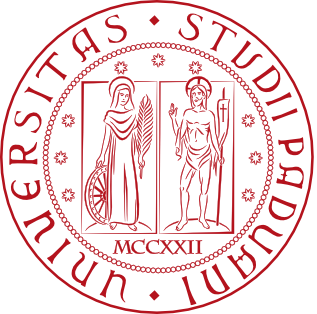Fig. 1: Lissajous table for different frequencies $m_1$ (rows), $m_2$ (columns), and
phase shifts $\alpha$.
(Applet adapted from: D. Shiffman, http://codingtra.in, coding challenge #116: Lissajous Curve Table)
2D Lissajous curves are curves inside a square that emerge as the superposition of a horizontal with a vertical harmonic motion.
They are named after the French physicist Jules Antoine Lissajous who studied them intensively
in a treatise published in 1857. Sometimes, they are also referred to as Bowditch curves, after
Nathaniel Bowditch who investigated their forms already earlier in 1815.
In the following, we want to give a brief introduction to Lissajous curves as well
as a collection of scientific work, software and public articles related to Lissajous curves.
We are particularly interested in the mathematical properties of Lissajous curves and in the
location of their intersection and boundary points.
1. What is a Lissajous curve?
For a frequency vector \(\boldsymbol{m} = (m_1, m_2) \in{\mathbb N}^{2}\) and a shift parameter \(\alpha \in {\mathbb R}\), a general Lissajous curve in the square $[-1,1]^2$ is given as \[\label{201509161237} \boldsymbol{\ell}^{(\boldsymbol{m})}_{\alpha}(t) = \left( \cos(m_2 t) , \ \cos \Big(m_1 t - \frac{\alpha}{m_2} \pi\Big) \right), \quad t \in \mathbb{R}.\] Depending on the parameters $(m_1, m_2)$ and $\alpha$, the curve has various forms and shapes. In Fig.1 and Fig. 2, you can create your own examples of Lissajous curves and experiment with the different parameters.
Fig. 2: The Lissajous curve \(\boldsymbol{\ell}^{(\boldsymbol{m})}_{\alpha}\) and its self-intersection and boundary points for different parameters \(\boldsymbol{m} = (m_1, m_2)\) and \(\alpha\).
2. Properties of Lissajous curves
The parameters \(m_1\) and \(m_2\) of the Lissajous curve \(\boldsymbol{\ell}^{(\boldsymbol{m})}_{\alpha}\) are the frequencies of a vertical and horizontal harmonic motion inside the square $[-1,1]^2$. As illustrated in Fig.1, the Lissajous curve itself is the superposition of these perpendicular harmonic motions. The additional parameter $\alpha$ describes a phase shift between the movement in horizontal and vertical direction.
As we are using natural numbers for the frequencies \(m_1\) and \(m_2\), the Lissajous curve $\boldsymbol{\ell}^{(\boldsymbol{m})}_{\alpha}$ is a closed curved (this is not the case if the ratio $m_1/m_2$ is irrational). The time period to traverse the entire curve \(\boldsymbol{\ell}^{(\boldsymbol{m})}_{\alpha}(t)\) once depends on the parameters \(m_1\) and \(m_2\). If the frequencies \(m_1\) and \(m_2\) are relatively prime, then the period \(P\) is given by \(P=2\pi\).
For a general parameter \(\boldsymbol{m} \in {\mathbb N}^2\), we need the greatest common divisor of \(m_1\) and \(m_2\), and denote it by \(g = \mathrm{gcd}(\boldsymbol{m}) \geq 1\). Then, we can rewrite the Lissajous curve as \(\boldsymbol{\ell}^{(\boldsymbol{m})}_{\alpha}(t) = \boldsymbol{\ell}^{(\boldsymbol{m}/g)}_{\alpha / g}( g t)\). In this case, the period of \(\boldsymbol{\ell}^{(\boldsymbol{m})}_{\alpha}\) is given by \(P = 2 \pi / g\). In particular, all properties of a Lissajous curve \(\boldsymbol{\ell}^{(\boldsymbol{m})}_{\alpha}\) with general \(\boldsymbol{m} \in {\mathbb N}^2\) can be obtained from the curve \(\boldsymbol{\ell}^{(\boldsymbol{m}/g)}_{\alpha/g}\) with the relatively prime parameters $m_1/g$ and $m_2/g$. When analyzing the properties of a single curve it is therefore enough to restrict the considerations to relatively prime frequency numbers \(m_1\) and \(m_2\).
3. The self-intersection and boundary points of the Lissajous curves
For a first characterization of all self-intersection points of the curve \(\boldsymbol{\ell}^{(\boldsymbol{m})}_{\alpha}\), we consider for \(t \in [0,2\pi)\) the sets \(\mathcal{S}^{(\boldsymbol{m})}(t) = \{ s \in [0,2\pi): \ \boldsymbol{\ell}^{(\boldsymbol{m})}_{\alpha}(s) = \boldsymbol{\ell}^{(\boldsymbol{m})}_{\alpha}(t) \}\) and the sampling points \[\begin{aligned} t^{(\boldsymbol{m})}_{l,\alpha} &= \frac{(l+\alpha) \pi}{m_1 m_2}, \quad l \in \{0,1, \ldots, 2m_1m_2-1\}. \label{eq-samples1}\end{aligned}\]
Proposition 1 Let \(m_1\)
and \(m_2\) be relatively prime numbers.
If $\alpha \in \mathbb{Z}$, then the curve
\(\boldsymbol{\ell}^{(\boldsymbol{m})}_{\alpha}\)
is degenerate, i.e, traversed twice as $t$ varies from $0$ to \(P = 2 \pi\) (once in forward direction and once in backward direction) and we have
\[\begin{array}{lll}
(i) & \# \mathcal{S}^{(\boldsymbol{m})}(t) = 1 & \text{if}\quad t \in \{\,t^{(\boldsymbol{m})}_{l,0}\,| \ l \in \{0,m_1m_2\} \},\\
(ii) & \# \mathcal{S}^{(\boldsymbol{m})}(t) = 4 & \text{if}\quad t \in \{\,t^{(\boldsymbol{m})}_{l,0}\,| \ l \in \{0,\ldots,2m_1m_2-1\}, \ l \not\equiv 0 \mod m_1, l \not\equiv 0 \mod m_2\}, \\
(iii) & \# \mathcal{S}^{(\boldsymbol{m})}(t) = 2 & \text{for all other $t \in [0,2\pi)$.}
\end{array}\]
If $\alpha \notin \mathbb{Z}$, then the curve
\(\boldsymbol{\ell}^{(\boldsymbol{m})}_{\alpha}\)
is non-degenerate with time period \(P = 2 \pi\).
In this case, we have \[\begin{array}{lll}
(i)' & \# \mathcal{S}^{(\boldsymbol{m})}(t) = 2 & \text{if}\quad t \in \{\,t^{(\boldsymbol{m})}_{l,0}\,| \ l\in \{0,\ldots,2m_1m_2-1\}, \ l \not\equiv 0 \mod m_1 \}, \\
(ii)' & \# \mathcal{S}^{(\boldsymbol{m})}(t) = 2 & \text{if}\quad t \in \{\,t^{(\boldsymbol{m})}_{l,\alpha}\,| \ l\in \{0,\ldots,2m_1m_2-1\}, \ l \not\equiv 0 \mod m_2 \}, \\
(iii)' & \# \mathcal{S}^{(\boldsymbol{m})}(t) = 1 & \text{for all other $t \in [0,2\pi)$.}
\end{array}\]
We can extract a series of properties from this result. The nodes \(\boldsymbol{\ell}^{(\boldsymbol{m})}_{\alpha}(t)\) in \((ii)\) and \((i)'\), \((ii)'\) correspond to the self-intersection points of the Lissajous curve \(\boldsymbol{\ell}^{(\boldsymbol{m})}_{\alpha}(t)\). If the curve is non-degenerate, these points are traversed twice in one period. On the other hand, if the curve is degenerate, they are traversed four times. The points in $(i)$ correspond to the start and the turnaround point of the degenerate curve in two of the corners of $[-1,1]^2$. Proposition 1 ensures that the sets \[\label{1709171731} \boldsymbol{\mathrm{LS}}^{(\boldsymbol{m})}_{\alpha,0} = \left\{\,\boldsymbol{\ell}^{(\boldsymbol{m})}_{\alpha}(t^{(\boldsymbol{m})}_{l,0})\,|\, l\in \{0,\ldots,2m_1m_2-1\} \,\right\} \quad \text{and} \quad \boldsymbol{\mathrm{LS}}^{(\boldsymbol{m})}_{\alpha,1} = \left\{\,\boldsymbol{\ell}^{(\boldsymbol{m})}_{\alpha}(t^{(\boldsymbol{m})}_{l,\alpha})\,|\, l\in \{0,\ldots,2m_1m_2-1\} \,\right\}\] contain all self-intersection points of the curve \(\boldsymbol{\ell}^{(\boldsymbol{m})}_{\alpha}\). The additional nodes in $\boldsymbol{\mathrm{LS}}^{(\boldsymbol{m})}_{\alpha,0}$ and $\boldsymbol{\mathrm{LS}}^{(\boldsymbol{m})}_{\alpha,1}$ are exactly those points at which the Lissajous curve \(\boldsymbol{\ell}^{(\boldsymbol{m})}_{\alpha}\) touches the boundary of the square $[-1,1]^2$. We summarize all important properties in the following Theorem 2 and in Table 1.
Theorem 2 Let \(m_1\) and \(m_2\) be relatively prime natural numbers.
If $\alpha \in \mathbb{Z}$, then \(\boldsymbol{\mathrm{LS}}^{(\boldsymbol{m})}_{\alpha,0}\) is the union of all self-intersection and all boundary points of the degenerate curve \(\boldsymbol{\ell}^{(\boldsymbol{m})}_{\alpha}\). \(\boldsymbol{\mathrm{LS}}^{(\boldsymbol{m})}_{\alpha,0}\) contains \( \frac{(m_1+1)(m_2+1)}{2}\) points in $[-1,1]^2$. It includes $\frac{(m_1-1)(m_2-1)}{2}$ self-intersection points and \(m_1 + m_2\) points on the boundary of $[-1,1]^2$.
If $\alpha \notin \mathbb{Z}$, then \(\boldsymbol{\mathrm{LS}}^{(\boldsymbol{m})}_{\alpha,0} \cup \boldsymbol{\mathrm{LS}}^{(\boldsymbol{m})}_{\alpha,1}\) is the union of all self-intersection and all boundary points of the non-degenerate curve \(\boldsymbol{\ell}^{(\boldsymbol{m})}_{\alpha}\). \(\boldsymbol{\mathrm{LS}}^{(\boldsymbol{m})}_{\alpha,0} \cup \boldsymbol{\mathrm{LS}}^{(\boldsymbol{m})}_{\alpha,1}\) contains \( 2m_1 m_2 + m_1 + m_2\) points in $[-1,1]^2$. It includes $2m_1 - m_1 - m_2$ self-intersection points and \(2m_1 + 2m_2\) points on the boundary of $[-1,1]^2$.
| Lissajous Curve \(\boldsymbol{\ell}^{(\boldsymbol{m})}_{\alpha}\) | Self-intersection points | Boundary points |
|---|---|---|
| $\alpha \in \mathbb{Z}$ (degenerate curve) | $\frac{(m_1-1)(m_2-1)}{2}$ | $m_1 + m_2$ |
| $\alpha \notin \mathbb{Z}$ (non-degenerate curve) | $2m_1 m_2 - m_1 - m_2$ | $2m_1 + 2m_2$ |
Table 1: Number of self-intersection and boundary points for the curve \(\boldsymbol{\ell}^{(\boldsymbol{m})}_{\alpha}\) if \(m_1\) and \(m_2\) are relatively prime. For general \(\boldsymbol{m}\), the corresponding numbers are obtained by considering the curve \(\boldsymbol{\ell}^{(\boldsymbol{m}/g)}_{\alpha/g}\) instead (\(g = \mathrm{gcd}(\boldsymbol{m})\)).
Publications
- Erb, W., Kaethner, C., Ahlborg, M. and Buzug, T.M. Bivariate Lagrange interpolation at the node points of non-degenerate Lissajous curves Numer. Math. 133, 4 (2016), 685-705 (Preprint)
- Erb, W. Bivariate Lagrange interpolation at the node points of Lissajous curves - the degenerate case Appl. Math. Comput. 289 (2016) 409-425 (Preprint)
- Erb, W., Kaethner, C. Dencker, P. and Ahlborg, M. A survey on bivariate Lagrange interpolation on Lissajous nodes Dolomites Research Notes on Approximation 8 (Special issue) (2015), 23-36 (Publication)
- Dencker, P. and Erb, W. Multivariate polynomial interpolation on Lissajous-Chebyshev nodes J. Approx. Theory, J. Approx. Theory 219 (2017), 15-45 (Preprint)
- Dencker, P., Erb, W., Kolomoitsev, Y. and Lomako, T. Lebesgue constants for polyhedral sets and polynomial interpolation on Lissajous-Chebyshev nodes Journal of Complexity 43, (2017), 1-27 (Preprint)
- Dencker, P. and Erb, W. A unifying theory for multivariate polynomial interpolation on general Lissajous-Chebyshev nodes arXiv:1711.00557 (2017) (Preprint)
Software
- LD3Ditp: A small software package that contains a Matlab implementation for 3D polynomial interpolation on the node points of degenerate 3D-Lissajous curves.
- LS2Ditp: This software package contains a Matlab implementation for bivariate polynomial interpolation on the node points of degenerate and non-degenerate 2D-Lissajous curves.
Further links
- CAA: Padova-Verona research group on "Constructive Approximation and Applications"
for further information and references on Padua points and polynomial approximation on Lissajous curves - The Institute of Biomedical Imaging at the UKE in Hamburg
- Mathematical methods for Magnetic Particle Imaging (MathMPI)
for further information on the DFG-funded interdisciplanary scientific network MathMPI
 University of Padova
University of Padova University of Hawaii
University of Hawaii University of Lübeck
University of Lübeck arXiv Preprints
arXiv Preprints ResearchGate
ResearchGate